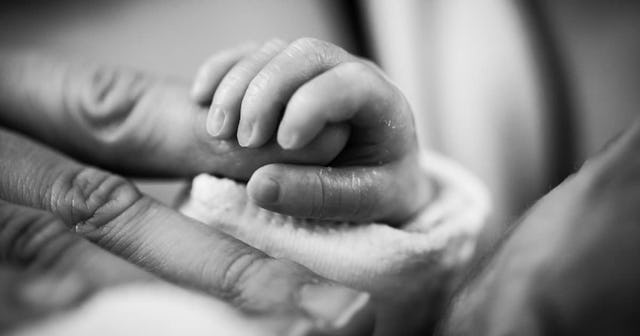I’m An OB/GYN Who Had A Preemie Baby By C-Section With Inadequate Anesthesia

It was a Friday morning like any other Friday morning. And then the contractions started.
I was used to having contractions. Our daughter had a rare intestinal malformation called duodenal atresia and it caused me to have extra amniotic fluid. Babies normally swallow amniotic fluid, but for our baby, the fluid couldn’t go past her stomach and the extra fluid backed up to high levels around her, something called polyhydramnios. Contractions are a common side effect.
But this day — the day I turned 32 weeks — the contractions were different. They had never been painful or regular. But that Friday morning, the contractions were both painful and regular and they weren’t going away. So, after a bit of hemming and hawing, my husband Falcon took me to the hospital.
At the hospital, my cervix was one centimeter dilated, very effaced and I was contracting every three to four minutes. They tried a few things to get my labor to stop, but it didn’t. A few hours later my water broke with a tidal wave of fluid, and shortly after that I was eight centimeters dilated. It finally sunk in that this was really happening. I was really having my baby eight weeks early. I felt scared, overwhelmed, and just sort of in a daze about things.
Not too long after my water broke my baby’s heart rate started having decelerations, or drops. As an OB/GYN physician, I knew exactly what I was hearing on the monitor, and her heartbeat was dropping over and over and over again. The doctor suggested “Okay, you’re eight centimeters, you’re 32 weeks so your baby is smaller, let’s go ahead and have you try and push.”
Courtesy of Dr. Nicole Calloway Rankins
I got moved to the operating room because that’s where the resuscitation equipment was for preterm babies. I pushed with everything I had, but she just wasn’t coming fast enough. Her heart rate kept dropping and the decision was made to go to C-section.
Before you have a C-section, we do something called an Allis clamp test to make sure the anesthesia is working properly. An Allis clamp is an instrument with very sharp teeth and we pinch the woman’s skin to see if she feels it. If she doesn’t feel the pinch, then her anesthesia is working well. If she feels the pinch then her anesthesia is not working well.
Well, they did the Allis clamp test and I felt it pinch. I don’t remember this, but my husband Falcon says that I repeated over and over again, “Wait, wait, wait, wait, wait. Just wait, wait, wait, wait, wait.” But because her heart rate had been dropping, they didn’t wait. I felt it when they cut. I clutched Falcon’s hand and moaned.
It didn’t take long to get our baby delivered. It was probably a minute, maybe a little bit more. But I felt everything for that minute.
I was temporarily comforted by seeing our daughter for the first time. I knew that they were going to take her away because she was preterm, but I had to see her first, so I insisted that they show her to me. They held her up over the surgical drape and she looked like a little monster. Her face was scowled and she was holding her hands up like claws. It was like she was saying “I’m here and I’m ready!”
After that, the anesthesiologist gave me what I call “happy drugs.” They don’t normally use these strong pain medications in C-sections because the medications can make babies come out and have trouble breathing. As the medicine went into my IV, I started to feel very woozy; the next thing I remember is being transferred from the operating table to the bed because my C-section was over.
Antenna/Getty
I got to the recovery room close to 9 PM and one of my best friends brought me some fast food. I asked for it because I was so damn hungry from not having eaten the entire day. I ate one chicken strip and a few fries, and I swear that was the best chicken I ever had in my life.
My hospital stay was uneventful. Our daughter had surgery three days after she was born. She spent a month in the NICU (a story for another day) and ultimately did very well. She’s now a smart 12-year-old with no long term issues from being a preemie or having surgery.
For a long time I wondered if I was nuts, or exaggerating my pain from the C-section. For my second daughter, I had a repeat C-section and it was entirely different. During that birth I laid there thinking, “Oh, so this is what a C-section is supposed to feel like!” I felt tugging, but it wasn’t painful. And it validated that I was not imagining the pain I felt during my first C-section, that I wasn’t exaggerating, and that I really had experienced it with inadequate anesthesia.
Truth be told, I felt traumatized by my first C-section with inadequate anesthesia. But it did make me a better OB/GYN doctor. I’m very sensitive to what women are saying, especially when a woman says she isn’t comfortable during a C-section. I’m also very sensitive about showing moms their baby during a C-section. I remember that overwhelming feeling of “I have to see my baby!” I don’t want another woman to feel pain or anxiety during her C-section the way that I did.
This article was originally published on